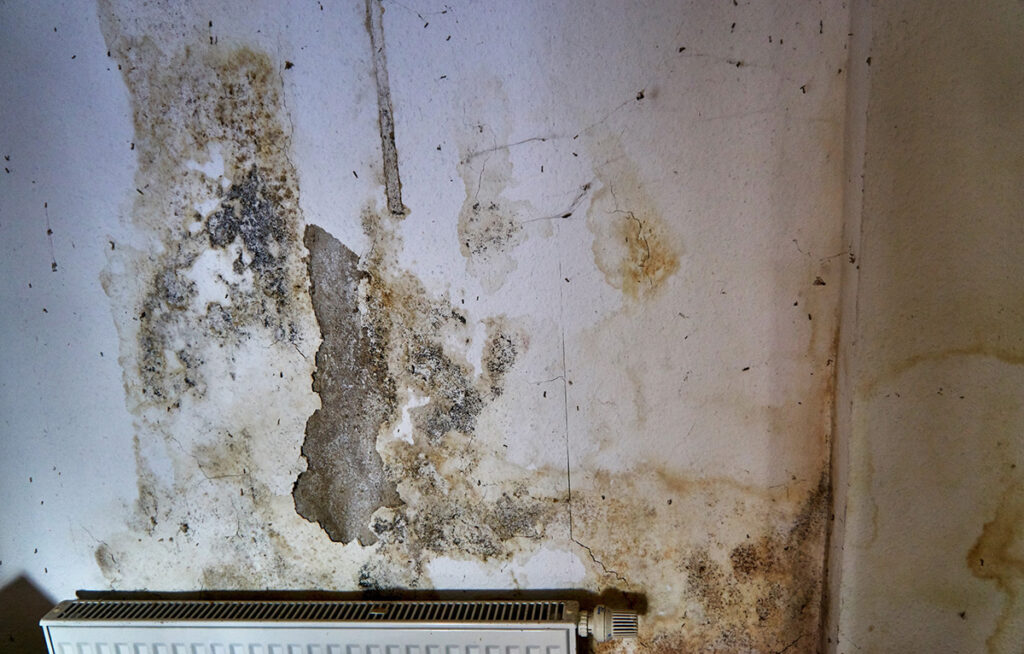Molds are ubiquitous microorganisms from the fungal kingdom.
As spores, they can be found wherever you can imagine, and with sufficient moisture, they become active and visible.
So, does their being ubiquitous make them compatible? What happens if you live with molds in a house?
- Living with mold is not good for your health.
- It has especially alarming effects for people with immune deficiency, hypertension, and respiratory conditions like asthma. For such people, the presence of mold in the house worsens their allergies, irritates the eyes/skin, and causes difficulty breathing.
- To otherwise healthy people, some long-run effects could include; sore throat, nasal congestion, irritation, and frequent coughing.
We all have felt disgusted at some point seeing mold in our houses. We will now see how molds interact with you, your household properties, and the atmosphere in your house.
How Does Mold In the House Affect You?
Unlike how it is perceived, molds are not just spots that appear over time. Instead, they are living organisms capable of carrying out life processes like feeding, respiration, and reproduction. One way their existence and presence affect you is in your health.
Molds take up a lot of oxygen when they respire, especially at night. So, this could make sleeping difficult in a congested house as there is competition between you and the molds for oxygen. Even during the day, breathing could become problematic with an increase in molds in the house.
Molds also reproduce speedily and encourage the generation of microbes and bacteria. The presence of these microbes and bacteria, depending on their concentration, irritates the eyes and skin. Inhaling the spores of molds is a significant cause of sore throats and running noses, even bronchitis.
The above effects usually take time to manifest, but the case is different for immune-deficient, hypertensive, and asthma patients.The very presence of molds is greeted with immediate and frequent allergic reactions for those people. Therefore, look hard for signs of mold if anyone in the house begins to sneeze, cough, or wheeze more frequently without a cold.
How Does Mold Affect the House?
The effects of mold in homes starts with devaluation in aesthetics as spots and patches appear on walls and floors. Their appearance and immediate expansion make otherwise beautiful walls and floors unsightly, even repulsive when accumulated. Next is an unpleasant and discomforting musty smell.
Molds are also very swift and powerful decomposers that break down anything organic in nature. Whenever they dwell on organic surfaces such as books, furniture, or wooden floors, they feed on them, slowly destroying them.
Is it a Mold?
Of course, not all spots are molds, but a mold in the house would be tough to miss. Furthermore, molds are not always black. Instead, they can also be white, spotted, or red depending on the type. Now, how can you be sure that what you see is a mold?
As much as I don’t recommend touching, it should feel cottony, velvety, or powdery if you do touch a mold. Unlike an ordinary stain or dirt, a mold grows, increasing in surface area as time goes by. The material it grows on can also tell since the mold would cause it to crack or peel off.
A sure confirmation of mold presence is its characteristic musty, damp and earthy smell. This smell alongside a nearby constant moisture source such as a leaky pipe and minimum light seals the bet.
How Do Molds Get Into a House?
Molds start as resting microspores that are invisible to the naked eyes. Since these spores are ubiquitous, they can be found anywhere imaginable as millions are reproduced and dispersed each day. They could even be on you right now!
Still, no condition in the house warrants their production from scratch. Nevertheless, mold spores that travel readily in the air come into a house through open doorways, vents, windows, and air conditioning. You could even bring them in yourself on your clothes and shoes.
Mold spores can stay alive but dormant for an extremely long period until conditions become favorable for growth. This favorable condition is simply the presence of sufficient moisture and oxygen. So, mold spores can stay in a house for an extended period only to surface when it experiences contact with moisture.
Molds are always present in a house but only come alive when conditions become suitable. Therefore, you only get to see molds in a place with a lot of moisture, even if only in the air. This occurrence is true because the excess water in the air eventually condenses to the advantage of the molds.
How Can I Effectively Deal With Mold?
Mold need water even to start growing and thrive, so deprive them! How can you do this, i.e., keeping your house dry all the time?
Start by keeping humidity in the house as low as possible, 30%-50% all day long is perfect. You can do this by using a dehumidifier. Also, use exhaust or extractor fans in moisture-concentrated places like the kitchen and bathroom to keep them dry always.
To prevent mold, always ensure immediate repair of leaky roofs and pipes in the house, however, small the leak. Furthermore, always go the extra mile to keep all surfaces dry all the time.
If you already have mold in your house, it will not be that easy to get rid of them. However, you’ll be able to successfully eliminate them.
Start by scrubbing the surface with soap, water, and disinfectants. However, this should be for mild spots and smooth surfaces. You can also apply expert-recommended fungicides but consider the safety of your children and edibles while doing so.
In many cases, a bleach solution would do the trick. Still, you may have to check on the spot to ensure extermination because molds can be resilient.
Do NOT use ammonia in the bleach solution! The odor does nothing to molds but can affect you negatively.

